National Security has overtaken Economy to become the main electoral issue at the moment. The only question is: can this momentum sustain for two long months?
Cvoter Tracker after the 1st year of Modi Govt: Modi popularity dented; 63 per cent of the respondents said, Modi government’s image presently appears to be anti-poor and anti-farmer.
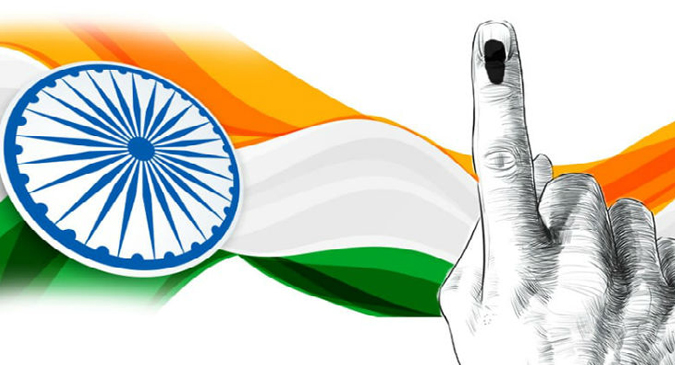
CVoter Tracker after the 5th year of Modi Govt: National security takes over jobs as a key concern, PM Modi’s popularity touching an all-time high.
Between the headlines after the first year to the headlines after 5th year stands Pulwama. It doesn’t mean the Economic concerns are not there. Make no mistakes about it. Unemployment became top of the mind recall issue within six months of the Modi swearing as PM of India. Since then it was always there, right on the top till January this year. In April 2014, when UPA-2 was in the last leg of government, the top two issues were Corruption and Inflation. These two issues are somewhere at the bottom right now.
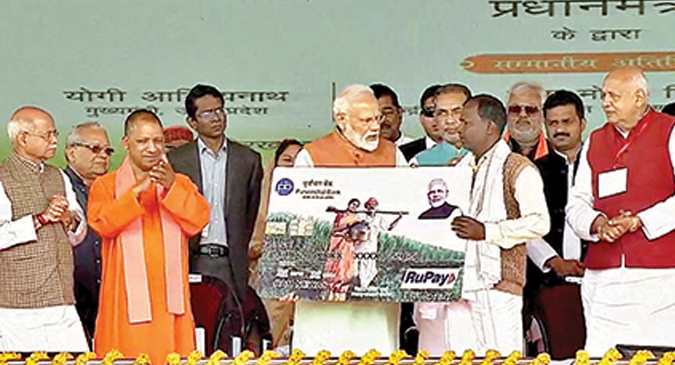
Prime Minister Narendra Modi launching the Kisan Samman Nidhi at Gorakhpur in Uttar Pradesh
Before we go ahead, I wish to clarify my understanding of ‘Unemployment’ as an issue, without disputing any data (after all we were the first one to report this as a critical issue, much before any liberal intellectual even figured it out as an electoral issue to start with). I am not disputing any job-data; just trying to put the things into perspective. Imagine, you are suffering from many ailments and your Body is aching at multiple parts. You go to a doctor and list down all pains: Headache, stomach-ache, backache, knee cap, twisted ankle, spondylitis, tennis elbow and what not. Now after listing down all these things you virtually plead to doctor: Doc’ saab, you can give whatever medicine you may wish to, but first do something about my Backache, because it’s killing me. Now, the doctor starts several medications but gives you some extra medication to treat your backache. Remember, you are still suffering from all other issues, including migraine. After a few days, when you revisit, you are not complaining of backache anymore, because you are relieved from that, and now your focus is on your hurting knee-cap. After a few weeks, when that pain also goes down, it’s the spondylitis, which takes the top of the mind recall as the biggest pain at that point of time. Still, you are not mentioning migraine, because it’s chronic and it is there, but your other pressing pains are over-riding your all other emotions. Doesn’t mean you are not suffering from Migraine. It only after you get considerable relief from all other ‘clear and present dangers’ that you start naming the chronic one. Got the drift? Same goes with the issue of Unemployment.
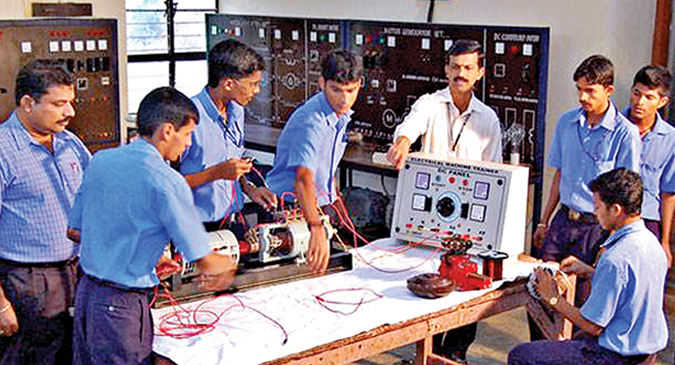
Skill Development has added a big pool of trained workforce in the country
Yes, the issue has been the top-of-the-mind-recall for last four years but it doesn’t mean the ‘Patient’ is not acknowledging the other reliefs the ‘Doctor’s’ prescription has taken care of. Else, how can those who are saying ‘Unemployment’ as the biggest issue would be so high on ‘Index of Optimism’? At the end of the year 2018, almost 24% of Indians said their biggest problem was “unemployment”. When asked which party could solve this particular issue, out of every 100 respondents who mentioned Unemployment as the issue, almost 42% named BJP and only 13% named Congress. When the same set of respondents were asked how optimist they are about their quality of life in the next 12 months: almost 53% of them responded: “It will improve”. Only 17% said ‘it will deteriorate’ while 13% said ‘it will remain the same’. Yes, their top concern remains ‘Unemployment’, but for the solution and optimism, they are not exactly looking in the direction that the opposition is hoping them to look in. This high level of Index of optimism is what according to me is a gamechanger. So, is the expectation. Modi Sarkar was getting bogged down by the sheer weight of these expectations. They needed some action to come out of it. And that started with Union Budget followed by the surgical strikes.
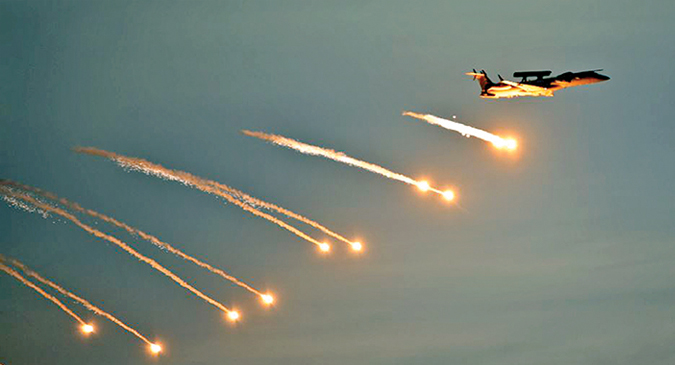
The Pulwama attack and subsequent kinetic action by Modi Sarkar may turn out to be a watershed political event. So far, the NDA government has been dynamism personified, led by a risk-taking Prime Minister the government has had several policy hits and misses. Normally, such well-intentioned dynamism is a cause for an electoral reward by itself, despite occasional policy failures. However, by early 2019 the government was unable to recreate the emotional tone of 2014 campaign of “Abki Baar Modi Sarkar”. The political impasse seemed to be amplified by Hindi-heartland losses in Madhya Pradesh, Chhattisgarh and Rajasthan. Prior to the losses in Hindi-heartland, the mood in opposition was somber, while the union government turned Nelson’s eye towards signs of rural distress. Corrective measures were applied post-December-2018 in the form of reservation for economically backward citizens and Prime Minister’s Kisan Samman Nidhi Yojna. These measures, if implemented earlier may have even saved the day for the touch and go election results observed in Rajasthan and Madhya Pradesh. Nonetheless, a dole spree from a fiscally hawkish government did indicate a certain amount of trepidation regarding 2019 Lok Sabha polls. The opposition was alive to the same and went into consolidation mode to capitalise on the sentiment. Post-Pulwama and Balakot strike, the ground sentiment underwent a sea-change.
A Gloomy Start to 2019
According to Cvoter weekly tracker that has been tracking the mood of the nation on a decadal span, the government of the day started this year with a very thin net approval of 6% when it came to living standards. 37% of respondents indicated an improvement in their living standards over the past year while 31% indicated a decline. By March 7, 2019, the same figures had shifted to 45% and 22%. This is an indicator where we generally expect a stable and range-bound reporting by the respondents. The reason being that the past cannot change much except in terms of mental perception. Therefore, unless there is a major external factor the perception of past should ideally remain range bound. In this case, we observed that net approval of the past year rose almost four-fold within the first two months of the year. The first impetus towards this was provided by budgetary doles and the second impetus arose from reaction to Pulwama attack.
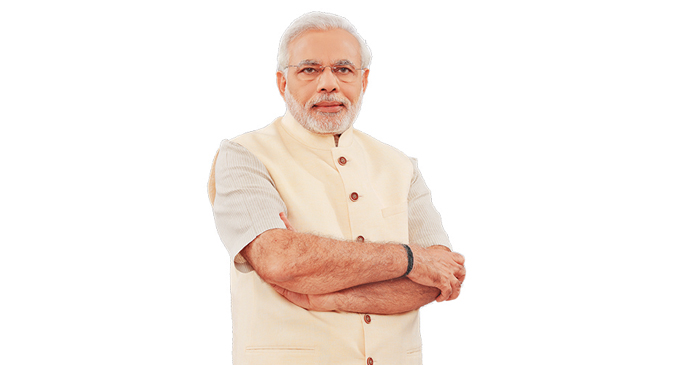
Also, 51% of respondents were very satisfied with the working of the central government as of March 7, 2019, when compared to 36% on January 1, 2019. The net approval rating which calculates the number of approvers minus the disapprovers rose to all-time of 62% as of March 7, 2019, this figure stood at 32% at the start of the year. The net approval rating of the central government nearly doubled between the start of the year to March 7, 2019. There were two significant events in the lead up to current state viz; budget and Balakot air strikes. Post budget, we observed only a marginal twitch in the needle with respect to net approval ratings, therefore one may conclude that budget doles were not gaining much support for the NDA. In the immediate aftermath of Pulwama attack, we observed a decisive rising trend in the net approval ratings. This trend underwent a consolidation post-Balakot airstrikes.
Modi’s Leadership
The image and approval ratings of Prime Minister Modi have mirrored the trend for the central government. The net approval ratings rose sharply in the aftermath of Pulwama terror attack. The ratings of PM Modi doubled between the start of the year and March 7, 2019. The reason for the same was highlighting of a decisive response by Modi when contrasted with then PM Manmohan Singh’s response to 26/11 Mumbai terror attacks. Simply put, security is one area where PM Modi has outdone UPA-I and II decisively. Even if some commentators and media sources are questioning the efficacy of raids, it cannot be denied that PM Modi is the first PM after Indira Gandhi to attack sovereign Pakistani soil.
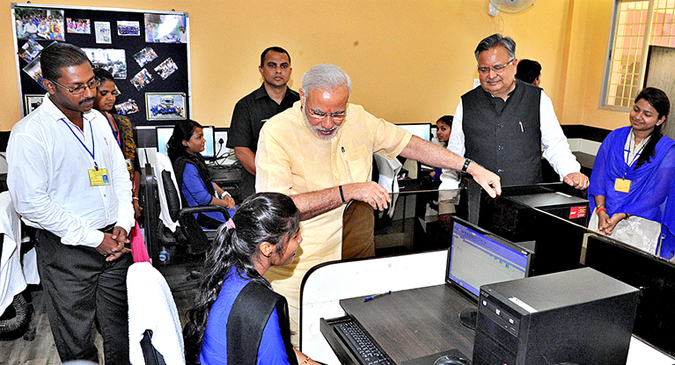
Rahul Gandhi’s Cliff
Congress President Rahul Gandhi was a rising force at the turn of this year. Fresh from the triple victory of Hindi heartland he seemed to be rejuvenating a moribund Congress. This reflected well in his net approval rating of 23% on January 1, 2019. The Pulwama terror attacks and the subsequent shift in the narrative could not have come at a more inopportune time for him. Currently, his net approval rating is down to 8% which constitutes a near 3-fold fall in his fortunes.
- A total of 51% of respondents were very satisfied with the working of the central government as of March 7, 2019, compared to 36% on January 1, 2019. The net approval rating rose to all time of the 62 per cent as of March 7, 2019
- In terms of leadership, it is still a one-horse race, Prime Minister narendra Modi leads his nearest rival Rahul Gandhi by a wide margin and continues to be an asset to his party. Rahul Gandhi’s rising trend has hit a roadblock
It is interesting to note that while PM Modi’s net rating has nearly doubled, Congress President’s net rating has declined 3-folds. The probable reason could be that security as an issue post-2004 has been Congress’s Achilles heel. The record of post-2004 Congress against terror and Pakistan is one of the most uninspiring of post-Independence governments perhaps matched only by the one-year IK Gujral administration of the United Front. The rise of national security as an electoral issue hurts Congress and its president more than it may benefit the BJP.
Anti-incumbency Conundrum
Anti-incumbency targeted against various tiers of governance is a key factor in deciding the outcome of polls. At the start of the year 27% anti-incumbency was directed against the central government/MP/Prime Minister this has now been lowered to 20% by March 7, 2019. The anger against state level of governance is largely static at ~25%, ditto for local governance at ~7%.
What’s New in 2019 Lok Sabha PollsTotal Voters
900 Million
No. of Polling Stations
1 MillionMore than 10 Million Election Officials
New Voters
84 Million
9% Share of new voters in the electorate
Voter in the 18-19 age group: 15 million (higher than the population of 159 Countries154,7000: Average number of new voters in each constituency
108,300 :Number of new voters to exercise franchise in each seat if the turnout is 70%In 2014, twice as many people in the 18-22 age group voted for the BJP as for the CongressThe Congress got 64 million less votes than the BJP in 2014-an average 117,864 votes per constituency
While declining anti-incumbency sentiment against the central tier of governance is good news for the BJP, the number of people who are undecided has risen by 5%. The undecided respondents numbered 47% by March 7, 2019. This indicates a polity that is in flux and may swing one way or the other by the polling date. So far, this one signal that is worrisome for the incumbent government post-Balakot strikes.
Weak Economic Sentiment on the Street
In the run-up to Lok Sabha 2019 polls, the NDA government was facing an identity crisis. A significant chunk of voters in 2014 voted for non-Nehruvian management of economy, i.e. less influence of the state. However, the anti-black money and taxation measures ended up strengthening inspector raj. An impression went around that NDA was obsessed with tax policies and other well-meaning but weakly executed policies. There was no structural and institutional break from the past apart from a strong and capable leadership team. In other words, the BJP was being a cleaner and more efficient version of Congress. BJP desperately needed to put some sunshine between its positioning and the Congress’s. Otherwise, 2019 Lok Sabha polls were threatening to become a simple game of coalition arithmetic. Pulwama strikes provided that opportunity.
Unemployment has been the number one issue for some time in our tracker. Unemployment was the number one issue for 29% respondents in the first week of 2019, it has ever since moderated to 22% by March 7, 2019. Apart from unemployment poverty and inflation also counted as electoral issues of top recall for 18% respondents at the start of 2019. The number may have moderated for now but if we were to count all socio-economic issues together then they continue to be the central pivot of Lok Sabha polls 2019. The key takeaway here is that there is something missing in the government’s narrative so far as the economy is concerned. Despite running a plethora of schemes and initiating welfare measures, the sentiment on the street is negative. Perhaps the implementation of demonetization and GST regime needs to be evaluated in the light of new evidence. Also, the controversy around unemployment numbers is ill-timed for the incumbent.
Security as an electoral issue
Security issues and terror strikes have for the most part remained a non-issue in our tracker data. Post-Pulwama there has been a meteoric rise in the importance of this issue. From a recall rate of around 3% in days preceding Pulwama attack, the issue has a striking recall rate of 26% currently. Security and terror strikes have become the most important issue of recall.
Conventional political wisdom suggests that security and terror strikes are electorally unimportant in the Indian context. The re-election of Manmohan Singh-led UPA after Mumbai 26/11 led credence to this theory. However, that was a different India from the current one. In today’s India, we have seen perhaps for the first-time security issue competing and outdoing a bread and butter issue like unemployment. Therefore, the current atmospherics are conducive for PM Modi; however the persistence of the issue is under doubt. Pulwama is an issue that is emotive and oxygenated by mainstream media, if the narrative goes cold after a while, there is a chance of bread and butter issues once again dominating the discourse.
The ability to resolve perceived issues of the day is a key factor in deciding the electoral prospects of a given entity. Prior to budgetary doles and rise in prominence of Pulwama, the net approval enjoyed by NDA over the UPA was a mere 4% on January 1, 2019. The net approval, in this case, represents the number of people who thought BJP was better at resolving issues minus those who thought Congress was better. As on March 7, 2019, this has risen to 28%, driven by a change in the basket of issues and some pro-active measures by the ruling alliance.
Key Takeaways
The Pulwama attacks allowed the BJP to burnish its security credentials decisively. The Balakot strikes have made BJP’s core voters happy, repositioned the party for neutral voters and put its opponents on the defensive. PM Modi is the first PM after Indira Gandhi to attack sovereign Pakistani territory. This partially makes up for the BJP’s lack of movement on Article 370, Shri Ram Janmabhoomi and Uniform Civil Code. BJP enjoys a clear and present advantage over the Congress when it comes to security. Also, the lead of BJP is too close for comfort when socio-economic issues dominate the discourse. There is a message for the planners of BJP in these figures. Primarily, BJP has been unable to sufficiently distinguish itself from Congress when it comes to making people feel the difference in terms of their livelihoods and economic interests. However, when it comes to controlling and responding on terror the same set of respondents do feel a clear and visible difference. Therefore, the advantage that will accrue to the BJP will be dependent on the relative importance of the two-issue vis a vis each other on the polling dates.
Caveat
A cautionary note is nevertheless in order. The euphoria from war or war-like events is susceptible to narrative shifts. The BJP is facing a considerably united opposition when compared to 2014, that is better attuned to BJP’s electoral machinery. It would be over-confidence and wrong to predict the Lok Sabha polls 2019 just yet.
In terms of leadership, it is still a one-horse race, PM Modi leads his nearest rival by a wide margin and continues to be an asset to his party. Rahul Gandhi’s rising trend has hit a roadblock and January 2019 has given way to March 2019 which seems to be a different beast altogether. Nevertheless, we cannot emphasise enough that a leadership advantage is one of the factors that go into an electoral victory; it is not the only and sufficient factor.
While PM Modi is the preferred choice of the nation, his leadership credentials in the aftermath of Pulwama crisis. Rahul Gandhi, on the other hand, seems to be sputtering and losing steam. However, this should not make us conclude that Lok Sabha polls 2019 are a done deal. We operate under a Westminster system whereby the results from 543 different seats will decide the national leadership and not other way around. There is some impetus that a leader like Modi may impart.
Last but not the least, the biggest threat to Modi Sarkar is not the issue of unemployment of the masses. It is the unemployability of a big number of its sitting MPs and MLAs. With the biggest pool of ‘good-for-nothing’ MPs and MLAs compromising the goodwill so hard earned by their leader, the BJP faces the clear and present danger of severe ‘internal bleeding’ rather than any external injury. For the last 25 odd years, regardless of the elections and political lines, almost two-thirds of sitting MLAs and MPs have been losing elections across ALL the states and from ALL the parties.
Today, anti-incumbency at the representative levels is the biggest cause of anti-incumbent verdicts all around. While all other Parties which are habitual of winning in default waves, and hardly concerned about auditing the performance of sitting MPs/MLAs, could be excused of this malpractice, but two parties which are based on cadre support cannot be pardoned with this overlook. The CPM and the BJP. The reason for the complete decimation of Left Front across India is because they lost touch with the masses and stopped an audit of the micro-performance of their sitting MLAs and MPs. The BJP stands the risk of towing the same line, but they have smartly devised the strategy of changing the tickets of non-performing MPs/MLAs. But this is not the cure. A party which boasts the lineage from a cadre-based mother organisation like RSS, cannot be pardoned for letting such anti-incumbency grow at micro-level. The lack of serious regular evaluation of the performance of sitting elected representatives is the biggest migraine of BJP right now. It is the fastest runner on the block, with perfect knee-cap and no backache whatsoever. If only they are lucky not to get the attack of severe migraine when the race starts. Currently, Modi and NDA are in a position of advantage but the electoral dividends from the same are subject to sustenance of the narrative over two months.
(The writer is founder-editor of noted trends, markets and elections research agency CVOTER)



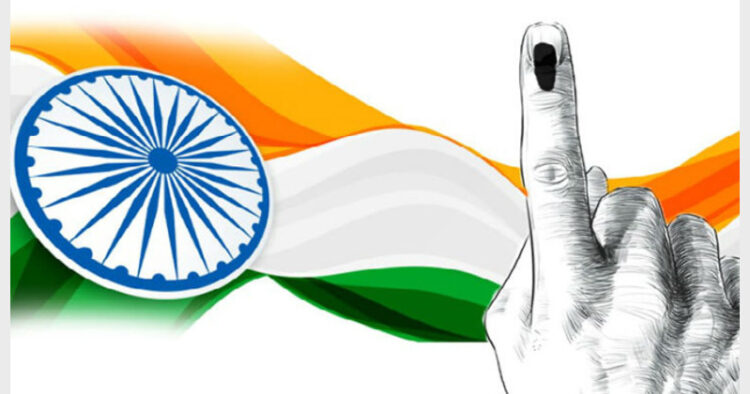










Comments